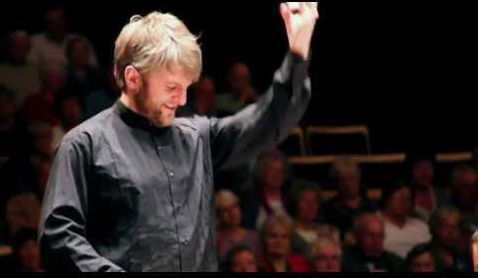Bournemouth Symphony Orchestra, leader Amyn Merchant
Kirill Karabits: Conductor
Brahms: Symphony No. 1 op 68 in C minor
Brahms: Symphony No. 2 op 73 in D major
Brahms: Symphony No. 3 op 90 in F major
Brahms: Symphony No. 4 op 98 in E minor
 IN another example of the BSO’s bold and innovative programming, the orchestra performed all four of Brahms’s symphonies in chronological order over two consecutive evenings. This gave us an unusual opportunity to consider as a whole this wonderful body of work, considered by many to be supreme achievement in the symphony post-Beethoven.
IN another example of the BSO’s bold and innovative programming, the orchestra performed all four of Brahms’s symphonies in chronological order over two consecutive evenings. This gave us an unusual opportunity to consider as a whole this wonderful body of work, considered by many to be supreme achievement in the symphony post-Beethoven.
The BSO’s headline for these concerts was ‘Kirill’s Brahms’, inviting us to consider the particular take on the composer offered by the orchestra’s dynamic principal conductor. Karabits is now reaching the end of his fifth highly-successful season with the orchestra and is already looking forward to the next. Promised highlights from the symphonic repertoire include Prokofiev’s much-underrated 4th and 6th symphonies as well as Shostakovich’s 5th, Bruckner’s 7th and Schubert’s 9th.
So how would one characterise ‘Kirill’s Brahms’? The first things to say is that either Karabits is a supreme actor or he really loves this music. Sitting in the choir stalls behind the orchestra gives one a chance to study the details of the conductor’s communication with his players and I have seldom seen a conductor smile as much as Karabits, sharing his pleasure in the music with the responsive and committed musicians in front of him. His tempi are usually on the brisk side, with little of the indulgent lingering over lyrical passages one sometimes hears from other interpreters. The paradox of Brahms is always that romantic content is presented within an almost severely classical structure, and here Brahms was more the heir to Bach and Beethoven than Schubert and Schumann.
Maxim Tortelier’s pre-concert talks had explored the way Brahms’s symphonies are built from short, simple thematic ‘cells’, a technique shared with Beethoven. These ‘cells’ provide not only links between movements, but links between symphonies, so hearing them all in chronological order greatly enhanced one’s appreciation of their workmanship.
In the first symphony, the driving first movement had a compelling, restless energy, and this set the tone for the whole two-day cycle, when the allegro outer movements of the symphonies never failed to grip. Karabits always held something in reserve for the blazing conclusions of the first, second and fourth symphonies. The playing was superb throughout, with the prominent high woodwind solos seductively phrased by the ever-reliable Anna Pyne (flute) and Edward Kay (oboe). The audience gave the second concert a rare standing ovation. Four Brahms symphonies in two evenings had proved to be entirely palatable: an inspired idea by whoever had had it.
PJ